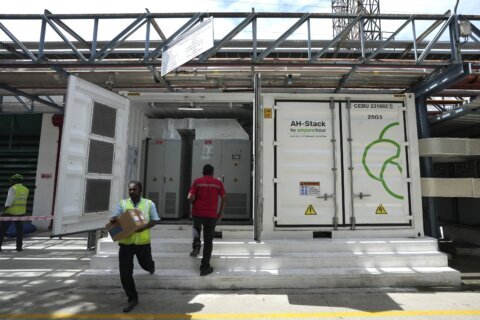Given the numerous challenges facing the San Francisco Bay Area housing market, some industry watchers are understandably wondering whether the bloom has come off the rose in this beautiful and historic region. Whether due to tech-related companies facing wrenching changes and layoffs, sky-high housing prices fueling a stubborn homeless problem or wondering whether the collapse of a favorite local bank may lead to further contagion among the region’s start-up firms, it’s fair to say the future looks murky. Although this murkiness has led to a bit of a frozen housing market — especially in the city of San Francisco — investors armed with data and patience may find some great opportunities in the months ahead.
While most famously known for and influenced economically by the city and county of San Francisco, as defined by the Census Bureau, the San Francisco-Oakland-Hayward metropolitan statistical area also includes San Mateo County to the south, Marin County to the north and the counties of Alameda and Contra Costa to the east.
Most new housing supply in this MSA is located along the eastern edges of Alameda and Contra Costa counties, in addition to various infill developments throughout the region.
Missy Wyant Smit, who has 20 years of experience in the San Francisco real estate market, says, “This is an amazing town where people want to live.” But due to its higher-than-average home prices, the San Francisco housing market is also a tough one to break into.
Using information from the U.S. News Housing Market Index, we’ve compiled the data you need for a better understanding of the San Francisco-Oakland-Hayward MSA real estate market in 2023.
[READ: Top Overvalued U.S. Housing Markets]
How the Bay Area Housing Market Changed in 2022
Because the San Francisco-Oakland-Hayward MSA housing market is so expensive, its ebbs and flows tend to mostly follow the availability of developable land and increases in demand from local employers. In 2022, building permits continued to trend downward, falling from just over 1,100 in March to 714 a year later, a drop of 31%. For the three months ending in January 2023 versus the same months a year earlier, total permits fell 23%.
Single-family home construction slowed down in San Francisco in 2022. In March 2023, there were 289 single-family detached housing permits issued, compared with 432 in March 2022, according to data from the U.S. Census Bureau. That’s about a 33% decrease year over year.
For single-family detached homes alone, the low availability of buildable land meant total permits trending down throughout 2022. For the three months ending in January 2023, permits for single-family homes fell 47% year-over-year.
Karen Mai, who has been selling San Francisco real estate since 2008, says that a lot of newer builds are coming in the form of condos. But more people want single-family homes, she says.
Wyant Smit says part of the reason housing supply has slowed is that San Francisco is already quite built up. “Generally, it’s very hard to build here,” she explains.
As multifamily homes fulfilled more of the demand for housing, their share of total permits continued to rise throughout 2022, peaking at 84% in December 2022, even though the actual number of multifamily permits steadily fell after reaching 917 permits 11 months earlier. Still, from March 2022 versus a year later, multifamily permits fell 30% to 498.
Bay Area Housing Supply and Demand
Mai has seen a bit of a decrease in buyer demand in the past year, and she attributes some of that to higher interest rates. So has Wyant Smit, who says, “Higher rates are impacting the market. Even people who can pay cash will often get a loan. When rates are double what they were and what you would’ve spent is double, that has a psychological impact.”
Steven Huang, a licensed real estate agent with Ascend Real Estate, has been selling San Francisco real estate since 2014. He says demand for condos has shrunk in the wake of the pandemic.
“Before the pandemic, condos were selling really well,” he says. “People used to want to walk to work. … Now, they want parking and a backyard.”
Huang also thinks that the stock market has had more of an impact on buyer demand than mortgage rates. Many San Francisco buyers work in tech, he explains. Now that their stock portfolios and stock option values have gone down, it’s harder for them to move forward with a home purchase.
The supply of housing in the San Francisco-Oakland-Hayward MSA, which had dipped as low as 1.06 months in December 2021 as tracked by Redfin, steadily rose in 2022 as more sellers took advantage of equity gains and listed their homes for sale. Last peaking at 2.9 months in October, the supply of homes for sale dipped below 2.0 months in December as mortgage rates fell by half a percentage point but snapped back to 3.2 months in January 2023 as rates rebounded.
For the month of March 2023 year-over-year, the supply of homes for sale rose to 2 months, up nearly three-quarters of a month, or an increase of 54%. This level of inventory is still below the four to six months of supply typically considered balanced between supply and demand for listings, and has made a steep drop since January, when supply was at 3.26 months. However, it matches the level of supply for the overall U.S., which clocked in at 1.9 months in March.
“If we had steady 7% interest rates, we’d probably have more buyers versus when they continue to go back and forth between 6% and 7%,” says Shabber Jaffer, an agent with Intero Real Estate Services. Jaffer, who also covers Silicon Valley to the south, says those communities, which offered larger lot sizes and less density during the COVID-19 pandemic, have tended to hold their values better than more urban-oriented neighborhoods in the city of San Francisco.
In the rental market, while the San Francisco-Oakland-Hayward MSA’s vacancy rate of 5.5% for the fourth quarter of 2022 is slightly higher than the 5% level generally considered to represent rental market equilibrium between supply and demand, it’s still lower than the 5.8% rate reported for the nation. Although the MSA’s rental vacancy rate was unchanged year-over-year in January, it has fallen sharply from the 8.7 months of supply reported for April 2021.
Sales activity in the months ahead may also be impacted by rebounding mortgage rates resulting from stubbornly high inflation, especially for the critical service sector which accounts for 80% of the U.S. job market. According to the seasonally adjusted Purchase Index from the Mortgage Bankers Association for the week ending April 14, mortgage applications decreased 8.8% from a week earlier. On an unadjusted basis, the Market Composite Index, which is a measure of mortgage application volume, decreased 8% compared to the week prior. That same week, the average contract interest rate for 30-year fixed-rate mortgages with conforming balances increased to 6.43% from 6.3% a week prior.
Consumer sentiment as measured by the University of Michigan’s Survey of Consumers rose to 67 on a 100-point scale in February, up more than 4 points year-over-year. While the sub-index measuring current economic conditions for January was higher at 68.4, the Index of Consumer Expectations was lower at 62.7, suggesting that while the consumer outlook is improving in the short term, respondents are expecting continued inflation and some economic turmoil in the months ahead.
[What’s the Difference Between Your Home’s Market and Assessed Value?]
Foreclosure Trends
With such low unemployment and a significant share of existing homeowners benefiting from the low mortgage rates offered in 2021 and part of 2022, both foreclosures and delinquencies tracked by Black Knight remain at very low levels in California. As of February 2023, just 0.10% of homes in the state were in foreclosure versus 0.5% for the nation. Statewide delinquencies of 2.2% in February were also much lower than the national average of 3.5%.
Median Home Price in the Bay Area
With inventory rising but still tight, the median sales price for a home in March 2023 in the San Francisco-Oakland-Hayward MSA fell nearly 13% from its peak in April 2022 and 7.9% year-over-year to a still-stratospheric $1.45 million.
Huang says that some condo owners are actually selling at a loss these days. Wyant Smit, meanwhile, says that homes listed for under $3 million are very active in today’s market. But, she says, the luxury high-end market of over $5 million is a lot slower.
“Buyers want to see opportunities,” says Wyant Smit, “so it kind of creates a standstill for the higher-end market.”
For newly built homes, potential buyers could snag a better deal than they might with existing resale units, especially along the eastern fringes of the market area. Greg Paquin, president of The Gregory Group in Folsom, California, which surveys and advises on new home construction, says builders have managed to find the “sweet spot” between offering incentives such as mortgage rate buydowns and price cuts.
“Throwing money at buydowns is not as effective as a price drop or allowances for upgrades and options,” he says. “But it’s a different world for standing inventory in which some builders are getting very aggressive.” Paquin says because a lot of land was bought in pre-COVID times at a relatively low price, builders have more breathing room to offer generous incentives versus the seller of an existing home.
Although home prices did continue to rise in early 2022, they peaked much earlier in the year than did median rental rates from Zillow’s Observed Rent Index. Rents continued to rise through August to $3,176 per month before continuing to fall to $3,069 by January. Consequently, although observed rents in the San Francisco-Oakland-Hayward MSA edged up 0.1% year-over-year during the first month of 2023, they still fell 3.4% from last August. With more multifamily supply on the way — including over 280,000 units under construction in just the West Census region alone in January — it’s possible that rents will continue to decline, depending on how many of these units are located in the local market area.
The median rent price in San Francisco was $3,089 in March 2023. That’s up 1.1% from a year prior. On a national scale, the median rent price in March 2023 was $1,996, up 4.7% from a year prior.
“Our view of the San Francisco multifamily market is that the road to recovery has been rocky and really due to two themes: workers not returning to the office and the recent tech layoffs,” says Yuna Gu, associate director with EquityMultiple, a real estate investing and technology firm. “Leasing velocity has dramatically slowed down as the tech layoffs began. All of this tells a story of low demand and depressed valuations for both multifamily and residential sectors.”
Although the San Francisco-Oakland-Hayward MSA may still be the second-largest in California with a total of 4.6 million households in 2021, according to the American Community Survey, more recently it has been losing population to other parts of California as well as to lower-cost states. Between 2020 and 2021, the Census Bureau showed the MSA losing 117,000 residents, with this outflow expected to continue as long as the state is unable to build enough housing affordable to households earning middle to lower incomes.
While national construction costs for new single-family homes as reported by the Census Bureau’s Construction Cost Index have retreated from their November peak of 195.5, they’re still up more than 7% year-over-year to 187.8.
Similarly, while average mortgage rates tracked by FreddieMac’s Primary Mortgage Market Survey did retreat from their peak of 6.90% in October to 6.26% in February, as of April 20, the rate for a 30-year fixed rate loan rebounded to 6.39%.
[5 Reasons to Get a Presale Home Inspection]
Unemployment Trends in the San Francisco Bay Area
Even with rising tech-related layoffs and a declining population, the San Francisco-Oakland-Hayward MSA continued to enjoy one of the country’s strongest job markets through the end of 2022, with non-farm employment up by nearly 72,000 year-over-year in March and an unemployment rate of just 3.4% versus 3.6% nationally.
There were about 123,500 construction jobs in San Francisco in March 2023. That’s a decrease of 1,200 jobs from a year prior.
Builder Confidence in Bay Area Improves
Builder confidence on a scale of 0-100 for the West Census Region from the NAHB/Wells Fargo Housing Market Index fell 43 points year-over-year to 41 in April, but is still up from 39 in January, and the strongest showing since December. Builder sentiment is negative at values below 50 and neutral at 50. It’s positive at values over 50.
For nonresidential construction activity, the Architecture Billings Index provides another economic indicator with a lead time of approximately 9 to 12 months, with 50 marking the split between increases or decreases in billings. In March, the index for the West Census region fell 6.8 points year-over-year to 47.2 while the national index fell 7.6 points to 50.4.
Bay Area Real Estate Market Predictions
Although the overall job market in the San Francisco-Oakland-Hayward MSA remains strong, tech-related layoffs and the surprisingly quick collapse of a critical banking partner in Silicon Valley Bank could have greater ramifications for the housing market. There’s also the issue of a declining population, although that loss tends to be focused among lower-income households in search of more affordable costs of living. However, if the “bloom is off the rose” in San Francisco and other parts of the MSA, it’s likely to be temporary as the historic City by the Bay and its surrounding communities have long proven to be among the country’s most resilient.
The U.S. News Housing Market Index is forecasting 1,275 single-home permits from April through August in addition to 1,526 permits approved for multifamily homes for the Bay Area. Although permits for single-family homes did fall further than predicted in the final few months of 2022, they rose further than forecast for multifamily units as builders took advantage of the increase in apartment demand. However, permits for single-family homes could rebound if mortgage rates retreat below 7% for a sustained period of time and builders find suitable land on which to build in the more affordable submarkets in the eastern parts of the market area.
Wyant Smit thinks that in the coming year, “the sub $5 million market will continue to be relatively active.” She also does not expect the market to look dramatically different in the next 12 months.
“In San Francisco, there’s never that much choice,” she says, referring to the city’s ongoing inventory challenges. “If you can adjust in your mind to the new mortgage rates, then we might see more buyer activity.”
All told, buyer demand should remain steady in San Francisco despite higher mortgage rates. “The weather here is second to none,” says Huang. “A ton of people still want to be here.”
Plus, Huang says, a home purchase in San Francisco isn’t just about owning a piece of real estate. “When you buy a home in San Francisco, you’re not just buying the home,” he says. “You’re buying the networking opportunity.”
More from U.S. News
Sacramento Housing Market Forecast
Should You Rent or Sell Your Home?
The Hottest Housing Markets in the U.S.
Bay Area Housing Market Forecast originally appeared on usnews.com
Update 05/15/23: This story was published at an earlier date and has been updated with new information.







